Today, we’re making easy no knead white bread loaves. We’ll make one loaf of sandwich bread, and use the other piece of dough for no knead cinnamon sticky buns. This recipe is also from Kneadlessly Simple by Nancy Baggett.
Is something wrong with the flour?
I figured out that at least part of the issues I’ve been having with the no knead breads is the flour ratio. I have kitchen scales, but I’ve been trying to use tools that most home bakers would have on hand. Therefore, I’ve been using my measuring cups instead of weighing the flour and then adjusting the flour to water ratio as needed. I’ve gotten used to the feel of the dough of traditional yeast breads so that has been working well so far.
However, no knead breads are a little bit different since you’re not kneading the dough – duh! After the mishap with the ciabatta, I decided to weigh the flour. I know, I know, why didn’t I just do that before? Well, all I can say is that old habits are hard to break. Plus, I love bread baking for the art. I know the science is important but I didn’t want to get that geeky about it.
Well, I decided it was time to get geeky – actually I guess I already had, I was just in denial. So I weighed the flour and as it turns out, my favorite measuring cup only holds 4 oz of flour. So for recipes that call for 3 cups of flour (ciabatta, for example), the actual weight is 12 oz. However, the weight specified in the recipe is 15 oz – a difference of 3 oz. For this easy white bread recipe, the weight specified in the recipe is 32.5 oz for 6 1/2 cups of flour. However, my 6 1/2 cups of flour only weighs 26 oz. From now on, I will be weighing the flour for these no knead breads.
Are you ready? Let’s get baking!
If you would like to bake along with us, turn to page 29 in Kneadlessly Simple to locate the recipe and list of ingredients.
Easy No Knead White Bread
Makes: 2 loaves (we’ll make one loaf and use the rest of the dough for sticky buns)
Mixing the dough:
In a large bowl, mix together the flour, sugar, salt, and yeast. In a measuring cup, whisk the oil into the water. Stir this mixture into the flour scraping down the sides until the mixture is thoroughly blended.
If the mixture is too dry, add additional water, a little bit at a time; however, don’t over-moisten it because the dough should be stiff. Or, if it’s too soft, add a little extra flour. I didn’t have to adjust the flour/ratio at all this time. It’s very humid here.
Brush or spray the top of the dough with oil. Cover the bowl with plastic wrap and refrigerate the dough for 3 to 10 hours.
Then let the dough rise at cool room temperature (about 70 degrees F.) for 15 to 20 hours. If convenient, stir the dough about halfway through the rise.
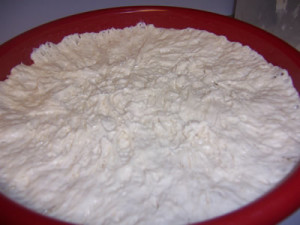
The timing and temperature seem to be the trickiest part of this no knead method. I like the long fermentation process but you do have to plan a little bit. It’s very hot outside and I don’t keep my temperature too cool inside (definitely not 70 degrees in the summer). I’ve been letting the dough rise at about 80 degrees F. I usually start the process at night and let the dough rest in the refrigerator all night. Then it sits on the counter all day. I’ll have to try these recipes in cooler weather to see the difference.
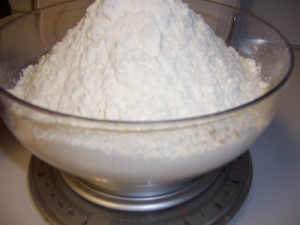
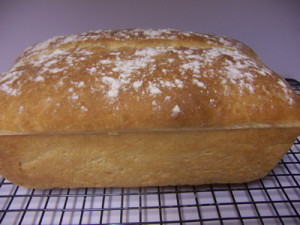
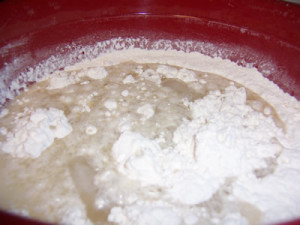
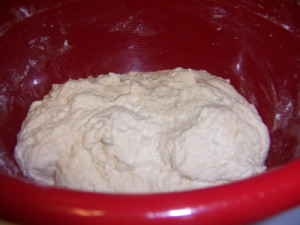
Nancy Baggett says
I was very interested to see your comments on how very different the cup measures and wieght measures were for your breads. I would of course be thrilled of all home bakers had scales–then I would be more confident that they are preparing the breads from my book accurately. Your results look great, btw.
Happy Baking, Nancy Baggett
Cathy says
Thanks Nancy!
I agree. Weighing the flour does make a difference…a big difference in my case.
BTW, my family loves this bread! It makes grilled cheese sandwiches taste great! It didn’t last long enough to try it with anything else.
Thanks,
Cathy